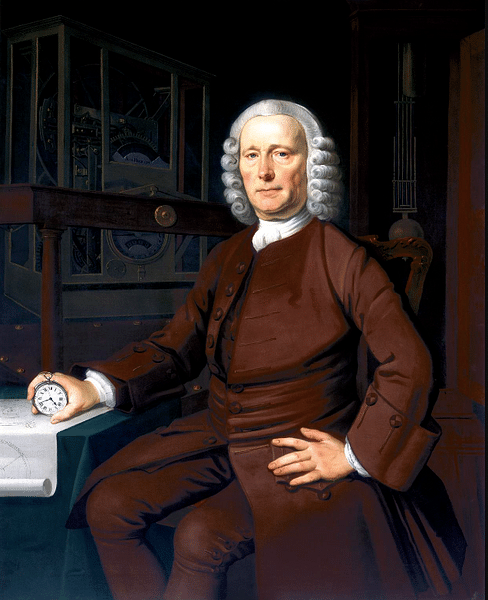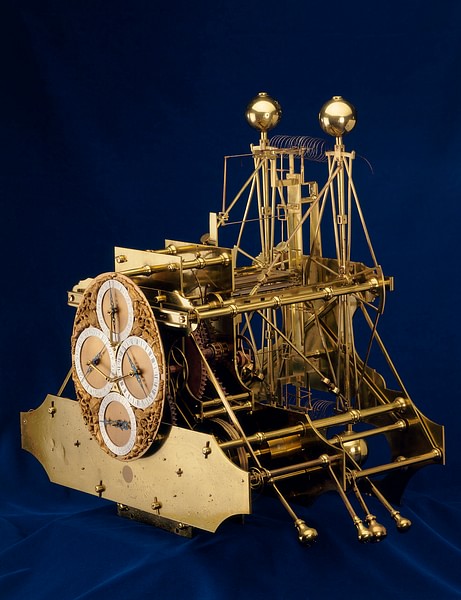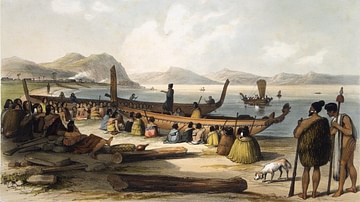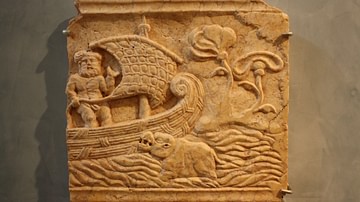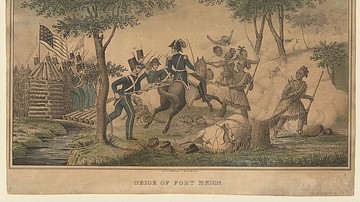John Harrison (1693-1776) invented an accurate marine chronometer after several decades of research and development. While the pendulum clock had already been invented in the 17th century, a clock that could withstand the vagaries of the sea, humidity, and air temperature remained an elusive dream. Harrison's last watch, the H5 of 1770, was so accurate that mariners could finally measure their longitude wherever they were at sea.
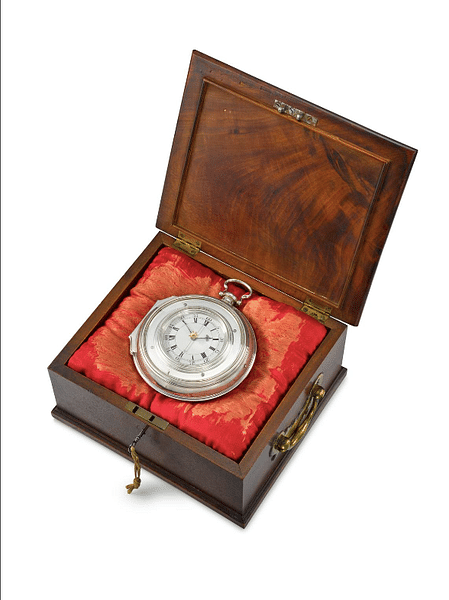
Traditional Attitudes to Time
Prior to the Industrial Revolution, the only area of life that was keen to keep a track of time was in the Church. Sundials have been around since antiquity but mechanical clocks, which had first been invented in Europe in the Middle Ages, were imported to Britain so that churches could offer their services at set times and so that monks and nuns could schedule their days within a medieval monastery. In agricultural working life, the rhythm of the day continued to be dictated by the rising and setting of the sun. In traditional craft industries like metalworking, woodworking, and pottery, there was no set starting and finishing points for a working day, rather, labour was measured and paid for in how long it took to complete a product or task over one or several days.
By the 16th century, clocks had become more sophisticated with intricate systems of gears and springs which were eventually miniaturised into pocket watches. One of the fundamental principles by which we today would measure the success of a clock was still missing, though: accuracy over a period of weeks and months. On top of that, the idea of a universal time – i.e. one city had clocks showing exactly the same time as another – was still only a theoretical dream. Any pre-18th-century traveller would have been lucky indeed to find the same time being kept at the town clock of their point of departure and that of their destination. This inaccuracy was not such a problem when it took several hours or even days to get between major cities, stagecoach drivers even had special watches that were set slower or faster than normal so that when they arrived at their destination their timepiece was not wildly out of sync with the time being kept there. It took the Industrial Revolution with its inventions and interconnectivity between people and places for the idea of a standard time for all to become a practical reality and for time to be regarded, particularly by large employers, as a commodity that could be well spent, saved, or wasted.
The Accuracy of Clocks
Horologists had been perfecting clocks and watches throughout the 16th and 17th centuries, but the best devices were large and only really accurate when a pendulum was incorporated into the mechanism. Galileo Galilei (1564-1642) had been the first to recognise the importance of a pendulum in keeping a clock accurate, but the first working example was invented by Christiaan Huygens (1629-1695) and Salomon Coster (c. 1620-1659) around 1657. Before the pendulum clock, most timepieces lost around 15 minutes every day and so had to be constantly readjusted. The best pendulum clocks, in contrast, lost only between 10 and 15 seconds each day, a huge improvement but still not good enough for navigators. An accurate clock that could be used at sea, where a pendulum was useless given the motion of a ship, was still very much a gap to be filled in technology. Making a small handheld watch was necessary, and Huygens did make one in the mid-1670s using a new idea of the balance spring, but this device was still not accurate enough for navigation purposes.
Measuring Longitude
The navigational sextant was invented in 1731 by John Hadley. Mariners could accurately measure the latitude they were in (position on a north-south line) by measuring the angle of the sun at noon (in the northern hemisphere) or that of the North Star or Polaris (in the southern hemisphere). The problem remained how to accurately measure how much time had passed since the ship had last left port or a known fixed position on charts or what was the precise time at a fixed reference point, like Greenwich, London. This information would give them their longitude (position on an east-west line). The problem became acute with the European colonization of the Americas starting with the voyages of Christopher Columbus (1451-1506) from 1492, the rounding of Cape of Good Hope by Vasco da Gama (c. 1469-1524) in 1497-9, and the first circumnavigation of the globe by the expedition led by Ferdinand Magellan (c. 1480-1521) in 1519-22. In the space of a few decades, the oceans, indeed the world, had become a lot bigger, and mariners needed more than ever to know their exact position. A watch was required that could keep, for example, Greenwich time for years on end so that a navigator always had an accurate reference point. As there were four minutes of time difference between each line of longitude, by comparing Greenwich time with local time, a navigator could calculate his longitudinal position.
There was a roundabout solution to finding one's longitude, this was called the 'Lunar Distance Method' which involved measuring the position of the Moon relative to known stars and using a book of tables compiled by the Royal Observatory in Greenwich. The problem to find a portable mechanical measuring device remained, though, one of the great challenges for the greatest minds of the period. Nobody could find a workable solution, so much so, the seeming folly of "finding the longitude" became an expression used for any madcap scientific enterprise with little hope of success.
Ordinary or adapted clocks had been experimented with on ships, but the motion in anything other than calm seas played havoc with their mechanisms and made them too inaccurate. Two other problems for clocks at sea were humidity and large variations in temperatures, again factors that could ruin a clock's accuracy by warping its small and intricate workings. The issue was ultimately solved by John Harrison (1693-1776), a Yorkshire carpenter and clockmaker, and his invention of the marine chronometer.
John Harrison & the Longitude Act
Harrison had been interested in clocks from an early age, and he built his first longcase (aka 'grandfather') clock entirely out of wood at the age of 20. Harrison, along with his brother James, made a clock for the stables at Brocklesby Park, Grimsby. This was an innovative device since, unlike most other clocks, it did not need lubrication oil for its workings. A lack of lubrication was one of the chief reasons a clock stopped working properly. The next step was to find a way to miniaturize this clock to a version small enough for use on a ship.
Harrison was motivated to invent his marine chronometer by a government-sponsored competition in 1714, run by the Board of Longitude. As the British Empire was building around the globe, ships and cartographers needed to know precise longitudinal measures. The competition was organised to motivate inventors to come up with an accurate timepiece. A handsome cash prize of £20,000 (over $3.5 million today) would be given to the winner. Harrison may have been the ultimate winner of the Longitude Act, but it was no easy path to victory.
H1, H2, & H3
Harrison's first marine chronometer, called H1, was created between 1730 and 1735. The rather large clock operated without being affected by gravity thanks to its moving parts being spring controlled and counterbalanced. Members of the Royal Society were sufficiently impressed with H1 to give it a trial at sea on HMS Centurion. The clock proved disappointing on the voyage out to Lisbon, but it was much more accurate on the return leg on HMS Orford. Harrison had shown, at least, that he was on the right line, and the government gave him £500 for further research and development.
It took Harrison eleven more years to come up with an improved chronometer, the H2. This was larger and heavier than H1 and had circular bar balances for better stability of the mechanism. Still not quite there, Harrison kept on tweaking his extraordinarily complex clock mechanism until he produced H3 in 1758. This third version could better cope with temperature fluctuations thanks to the bimetallic strip of the balance spring. Another innovation with this model was a caged roller bearing that reduced friction in the workings. Unfortunately, the accuracy was still not quite there even with H3. Then Harrison made a breakthrough. In order to better test his clocks, Harrison designed a pocket watch version and had it made by the noted watchmaker John Jeffreys. Harrison then realised that despite the poor reputation at the time for handheld watches, he could incorporate features of H1, H2, and H3 and make an accurate one, perhaps more accurate than any clock he had yet made. A smaller clock that more or less fit in the pocket would be much more versatile and appealing to mariners than his somewhat cumbersome efforts so far. Harrison thus began work on his two 'sea watches'.
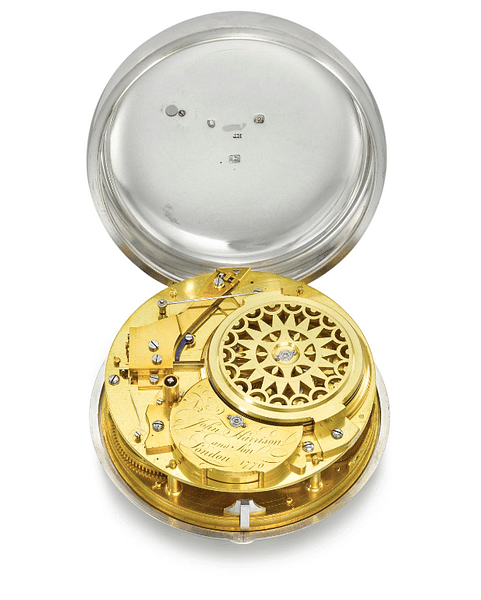
H4 & H5
In 1761, Harrison produced his radical H4 chronometer. The watch resembles a large pocket watch and measures just over five inches (13 cm) in diameter. It weighs 3.2 lbs (1.45 kg). The 'sea watch' was put to the practical test of travelling on HMS Deptford from Portsmouth to Jamaica from November 1761 to January 1762. The Board of Longitude was still not satisfied; the watch had lost 5.1 seconds on the voyage, and the board demanded more research and more testing. The Board of Longitude finally approved H4 after it was tested again on HMS Tartar on a voyage to Barbados in March-April 1764. The original H4 Harrison chronometer is today on display in the Royal Museums Greenwich, London.
Success & Recognition
The Harrison marine chronometer now permitted mariners to accurately measure longitude, but the government still did not reward Harrison with the full cash prize it had promised. There was some wrangling over the terms of the prize. Harrison's H4 chronometer had met the required accuracy stipulations, but now the Admiralty wanted the inventor to hand over the designs and make two copies of the watch. After several weeks, Harrison agreed to the new terms.
Harrison, unhappy with the lack of recognition from the government for his efforts and the demands being made of his time, approached King George III of Great Britain (r. 1760-1820). The king sympathised and was enthusiastic to try out Harrison's latest and best sea watch, the H5. Over a trial period of ten weeks at sea in 1772, the monarch was impressed with H5's accuracy, the watch having lost just one-third of a second per day. Harrison was still obliged to badger the penny-pinching Board of Longitude for the outstanding balance of his cash prize. After petitioning Parliament in 1773, the inventor did finally receive another £8,750 and official recognition that he had solved the problem of accurately measuring longitude at sea. Harrison was certainly proud of his watch, as he displayed in a contemporary letter:
I think I may make bold to say that there is neither any other Mechanism or Mathematical thing in the World that is more beautiful or curious in texture than this my watch or Time-keeper for the Longitude.
(Dugan, 91)
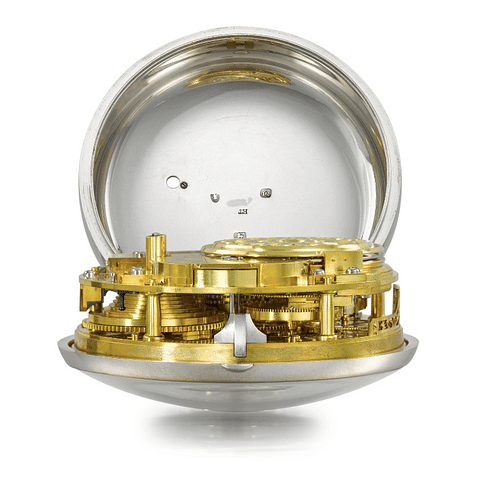
The H5 is today in the Science Museum in London. The culmination of Harrison's long journey of R&D, it has a case made of silver with a white enamel dial and gold central star for adjusting the hands when required. The complex workings are made of gold, silver, and steel with diamond and jewel elements. The back of the workings is engraved with "No. 2 John Harrison & Son London 1770".
The British Admiralty was in agreement with Harrison, and despite the government's dilly-dallying over the Longitudinal prize, they commissioned John Arnold to mass-produce Harrison's marine chronometer and then henceforth issued one to all Royal Navy ships.
